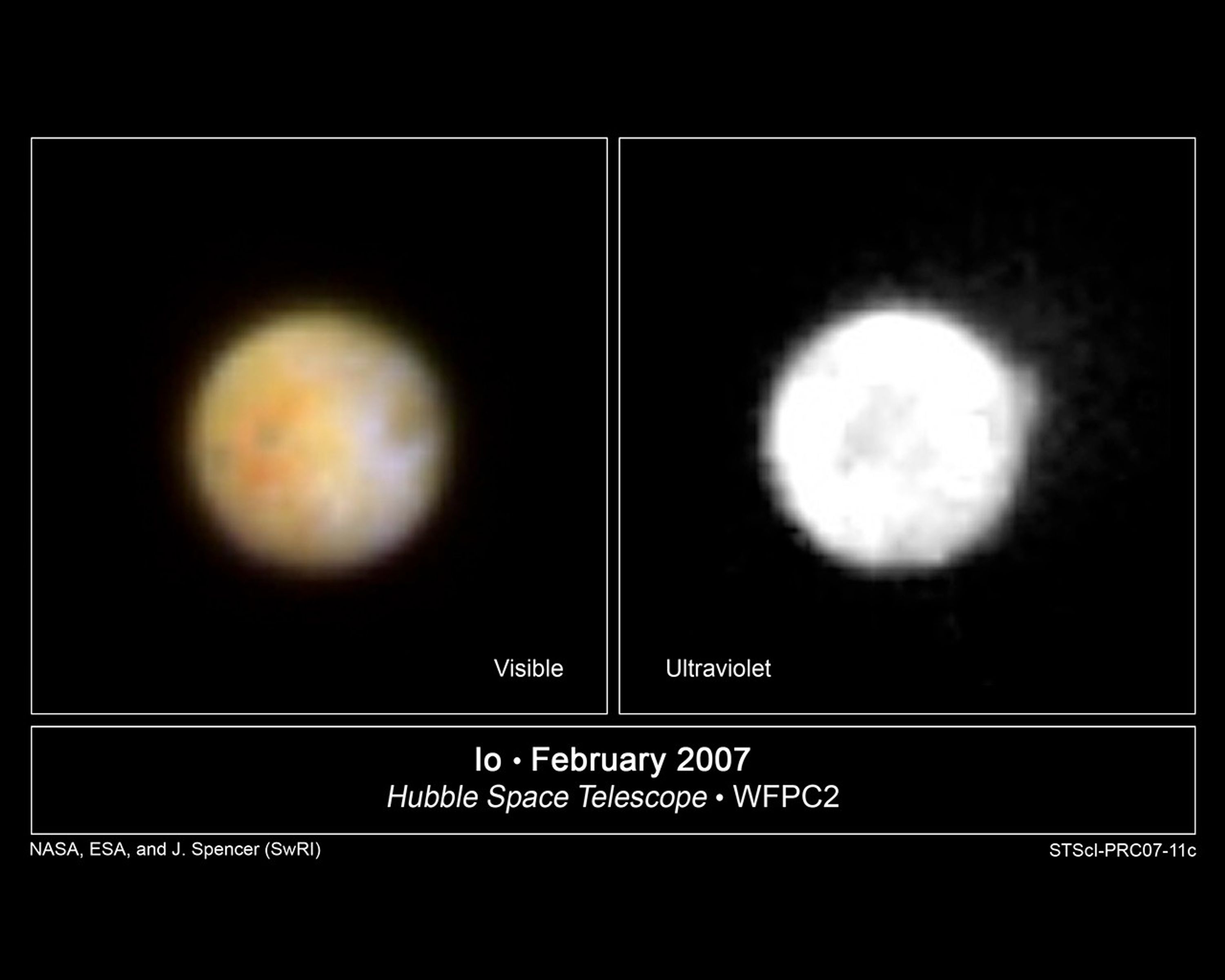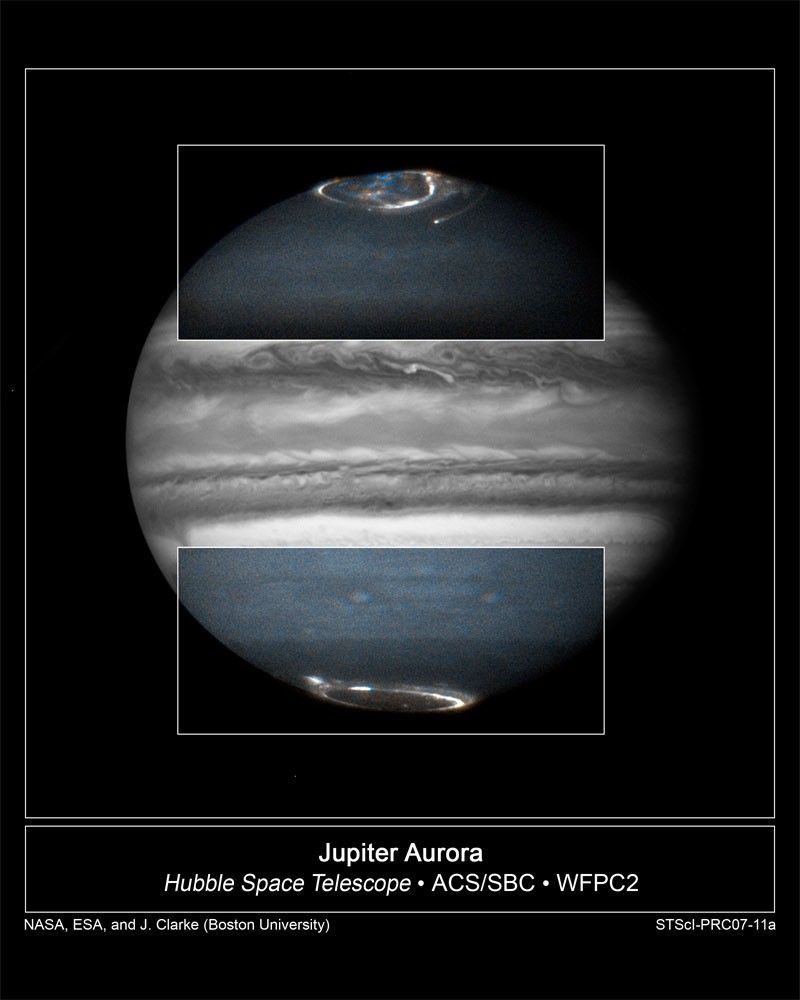1 min read
Hubble Observes Volcanic Io

NASA's Hubble Space Telescope is monitoring the volcanically active moon Io in support of the February 28 New Horizons spacecraft flyby of Jupiter. These images were taken with Hubble's Wide Field Planetary Camera 2 on February 14, 2007. The left image, taken in natural color, reveals orange oval deposits of sulfur around the Pele volcano, and other familiar surface features on Io, which is innermost of the Galilean satellites. The ultraviolet image on the right shows a big plume rising above the surface, not far from the north pole. Though Io is no bigger than Earth's geologically dead Moon, Io's interior is kept molten due to the gravitational tug of Jupiter and the other Galilean satellites.
Hubble will continue to photograph Io, as well as Jupiter over the next month, as the New Horizons spacecraft flies past Jupiter. New Horizons is en route to Pluto, and made its closest approach to Jupiter on February 28, 2007.
Through combined remote imaging by Hubble and in situ measurements by New Horizons, the two missions will enhance each other scientifically, allowing scientists to learn more about the Jovian atmosphere, the aurorae, and Jupiter's charged-particle environment and its interaction with the solar wind.
About the Data
- Data DescriptionData DescriptionProposal: A description of the observations, their scientific justification, and the links to the data available in the science archive.
Science Team: The astronomers who planned the observations and analyzed the data. "PI" refers to the Principal Investigator.The Hubble images were created from HST data from proposal 10871: Principal Investigator: Spencer - InstrumentInstrumentThe science instrument used to produce the data.HST>WFPC2
- Exposure DatesExposure DatesThe date(s) that the telescope made its observations and the total exposure time.February 14, 2007
- FiltersFiltersThe camera filters that were used in the science observations.255nm, 410nm, 569nm, and 791nm
- Object NameObject NameA name or catalog number that astronomers use to identify an astronomical object.Io
- Object DescriptionObject DescriptionThe type of astronomical object.Jovian moon
- Release DateMarch 1, 2007
- Science ReleaseHubble Monitors Jupiter in Support of the New Horizons Flyby
- Credit
Related Images & Videos

Hubble Follows Jupiter Aurorae
Combined ultraviolet- and visible-light images of Jupiter from NASA's Hubble Space Telescope were taken from February 17-21 in support of the New Horizons flyby of Jupiter on February 28. The image segments in the boxes were obtained using Hubble's Advanced Camera for Surveys's...

Hubble Images Jupiter in Support of the New Horizons Flyby
NASA's Hubble Space Telescope took this true-color view of Jupiter in support of the New Horizons Mission. The image was taken with Hubble's Wide Field Planetary Camera 2 on February 17, 2007, using the planetary camera detector. Jupiter's trademark belts and zones of high- and...
Share
Details
Claire Andreoli
NASA’s Goddard Space Flight Center
Greenbelt, Maryland
claire.andreoli@nasa.gov

































